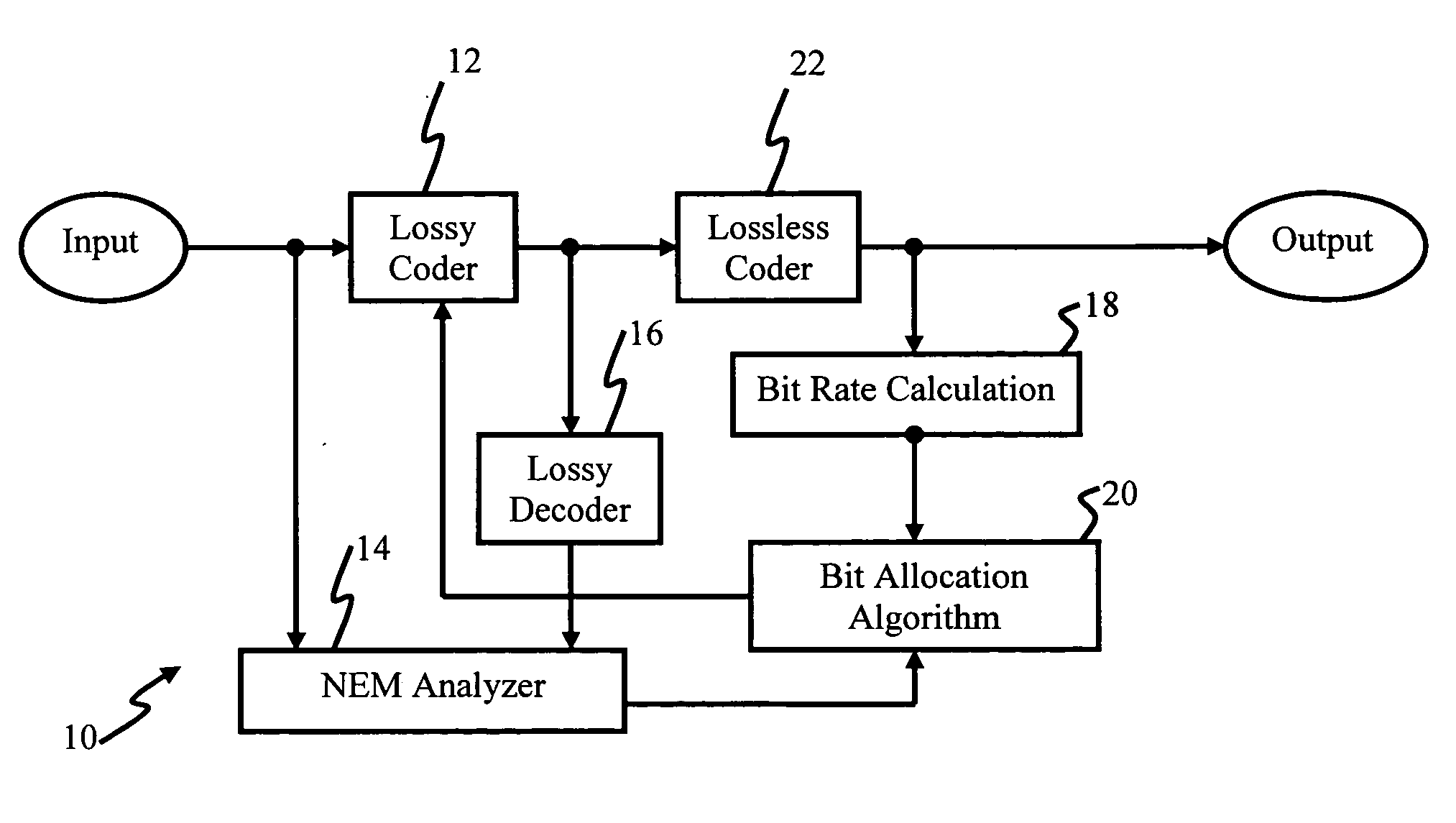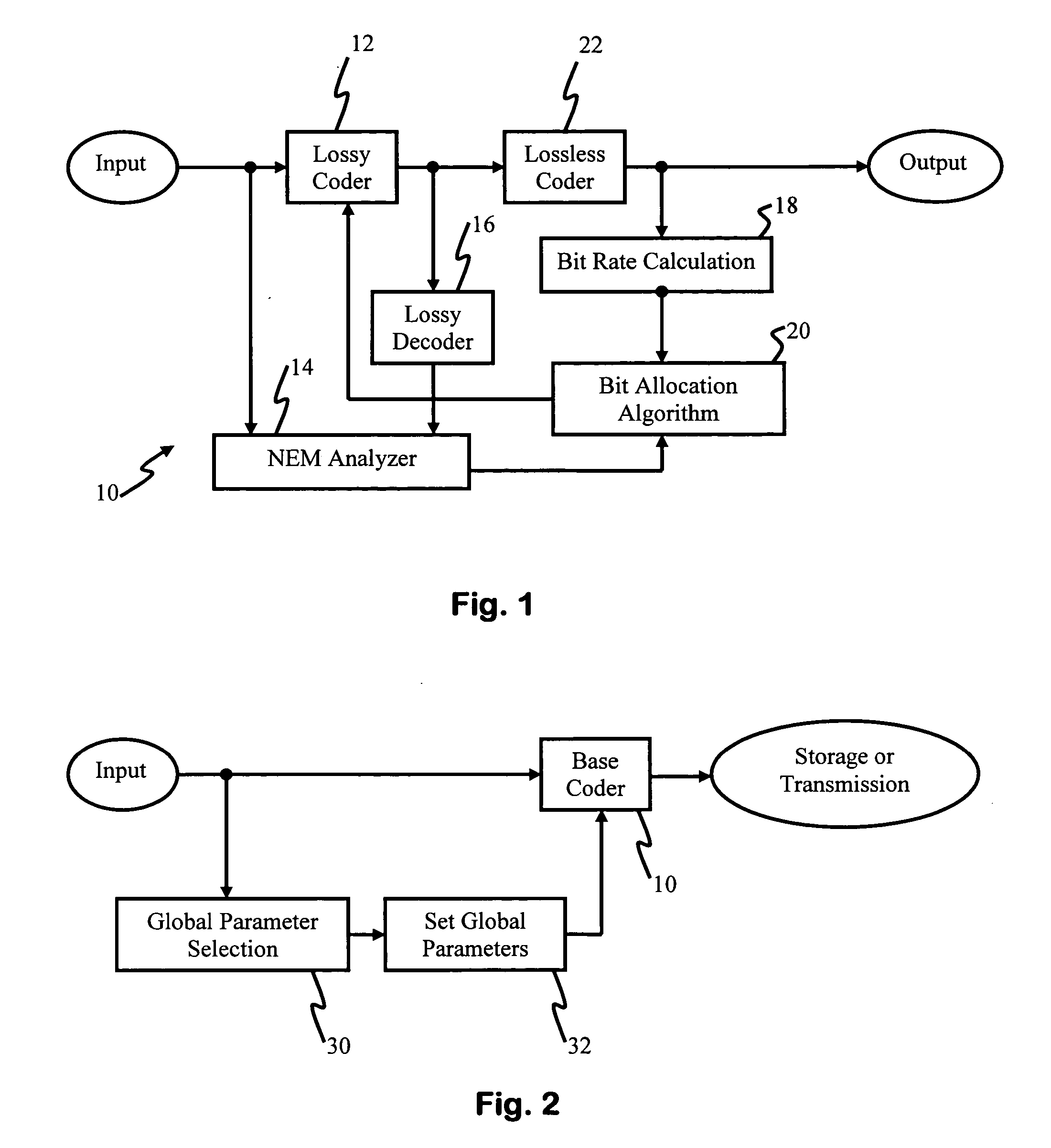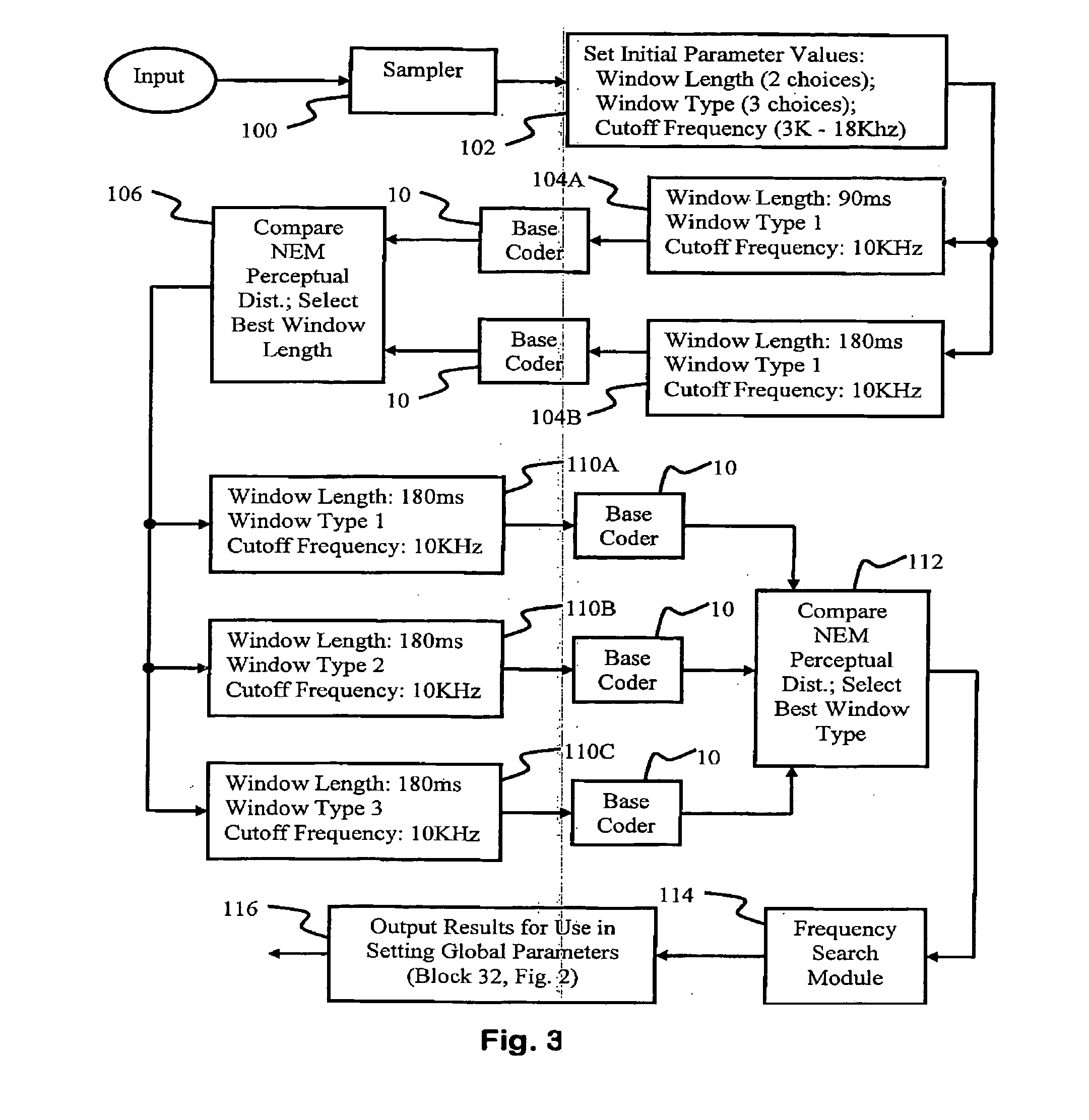Perceptual quality based automatic parameter selection for data compression
- Summary
- Abstract
- Description
- Claims
- Application Information
AI Technical Summary
Benefits of technology
Problems solved by technology
Method used
Image
Examples
Embodiment Construction
[0023] A Neural Encoding Model (NEM) Audio Coder employs the NEM to compute an objective measure of perceived quality of the reconstructed source. For efficiency, a source data set is sampled to form a smaller, representative sample. The perceptual measure, referred to as a perceptual distance, is analyzed after initial encoding of the sample clip using a lossy coder and is employed in an algorithm for selecting optimal global coding parameters for the lossy coder. In a preferred embodiment, the sampling of the source data set into a sample clip, the determination of the respective perceptual distance, and the adjustment of global coding parameters is performed automatically.
[0024] According to one embodiment of the presently disclosed invention, a six second sample clip is utilized. The sample clip of this embodiment is comprised of nine segments extracted from the source data set at regular intervals, each being 0.75 seconds in length. For example, for a source data set of T seco...
PUM
 Login to View More
Login to View More Abstract
Description
Claims
Application Information
 Login to View More
Login to View More - R&D
- Intellectual Property
- Life Sciences
- Materials
- Tech Scout
- Unparalleled Data Quality
- Higher Quality Content
- 60% Fewer Hallucinations
Browse by: Latest US Patents, China's latest patents, Technical Efficacy Thesaurus, Application Domain, Technology Topic, Popular Technical Reports.
© 2025 PatSnap. All rights reserved.Legal|Privacy policy|Modern Slavery Act Transparency Statement|Sitemap|About US| Contact US: help@patsnap.com



